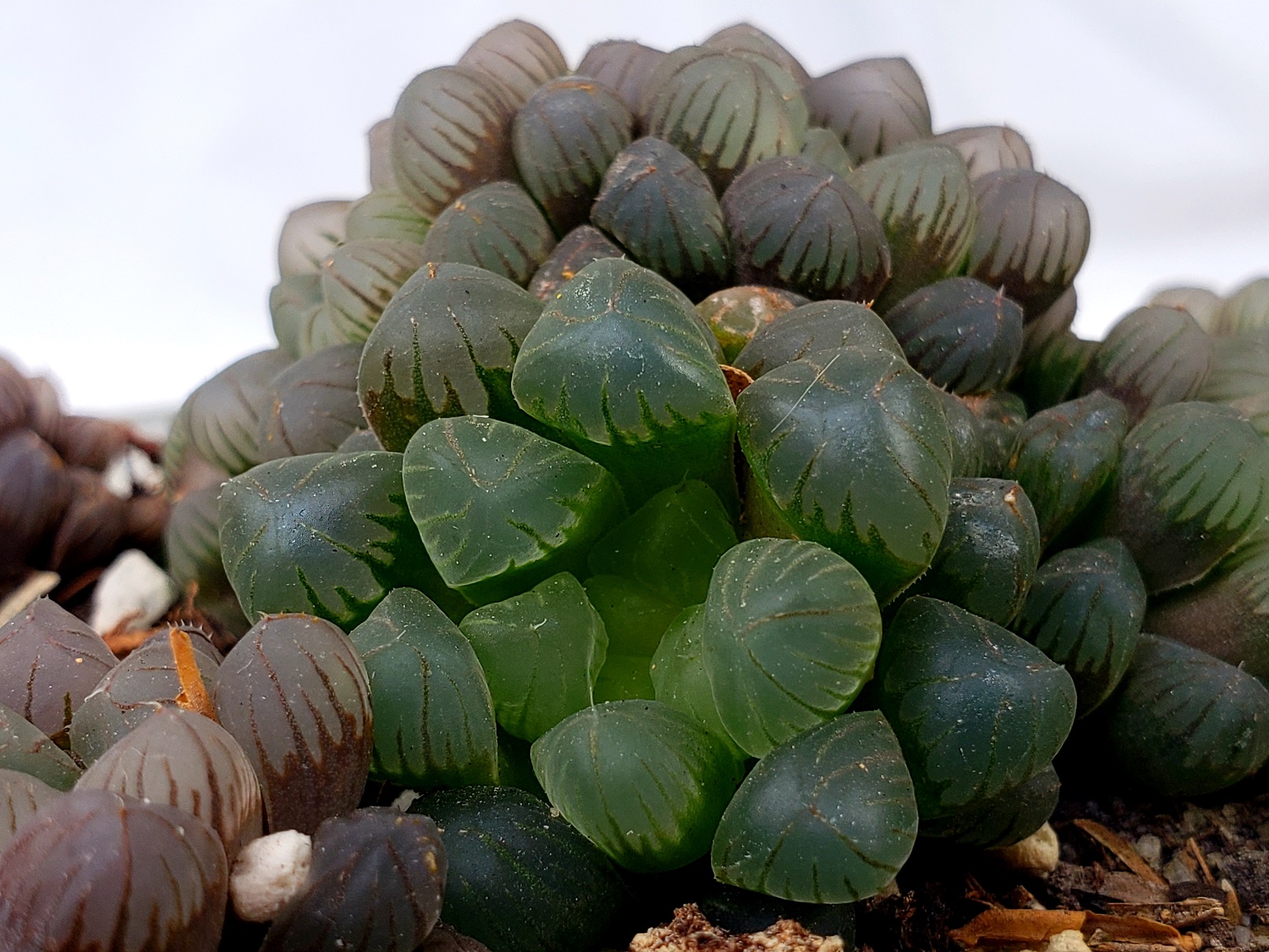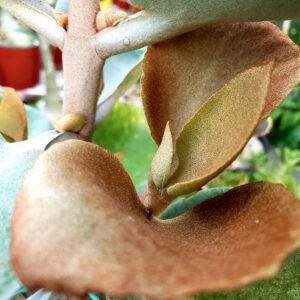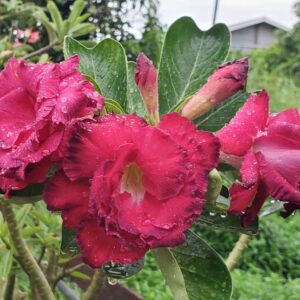Watering
As you would expect from a succulent type of plant, haworthia cooperi plants are not big drinkers. They can survive short periods of drought and are not likely to perish if you leave them unattended while on vacation. However, a consistent watering pattern will be welcomed by these plants.
If they are grown outside, either in the ground or in large containers which house several succulents, then you have the freedom to be a bit haphazard with your watering routine. Plants grown in this way have the opportunity to spread out their roots and seek moisture if they need it. Ground soil also tends to retain moisture for longer than a small pot, and will therefore not need watering as often.
If you accidentally overwater, the sun will most likely take care of the issue for you by drying out the soil again before any damage is caused, while excess water at a deeper level can drain away, away from the plant’s root system. For outside grown haworthia cooperi plants, water them regularly during hot and dry weather, whenever the top few inches of soil have dried out. In particularly hot climates, this could mean watering every day.
From fall until spring, you can cease watering as the plants enter dormancy and do not need any moisture. They will survive on rainwater alone. Indoor haworthia cooperi can be a bit trickier when it comes to watering. If you have kept other succulents alive, then this shouldn’t prove difficult for you. They should only be watered once their soil has dried out, and the biggest problem for this plant is overwatering.
If you are ever unsure whether to water the plant, then simply don’t! Overwatering this succulent is a much bigger problem than underwatering it, so err on the side of caution if you are conflicted. In the winter, you should dramatically decrease watering your haworthia cooperi houseplant. A monthly watering will likely be enough to keep it ticking over until spring rolls around again.
Soil
As these plants will not tolerate sitting in wet soil, planting them in a well-draining soil is essential. This will ensure that excess moisture drains away quickly so that the roots of the plant are not subjected to soggy living conditions.
Use a pre-mixed soil suitable for cacti and succulents, or make your own mix by combining organic potting soil with a mixture of shredded bark, coarse sand, pebbles, or charcoal. It’s a good idea to topdress your haworthia cooperi plants with gravel. While this might seem like a purely aesthetic feature, the gravel actually helps to keep the leaves of the plant from touching wet soil, and therefore helps to prevent them from rotting.
Light
This succulent enjoys bright light, but not direct or full sun. Direct sun will cause harm to the plant, and in fact, in its native habitat, the haworthia cooperi is mostly underground. Only the tips of the leaves protrude from the ground, with the majority of the foliage burying itself below soil level to protect itself from the sun.
When planting your own haworthia cooperi, you won’t need to replicate this growing style, so long as you position the plant in a spot where it receives bright, indirect light. If grown as a houseplant, a windowsill is an ideal growing spot, where sun floods through the window in the morning, but is shaded in the afternoon. Just 4 or 5 hours of sun each day will be enough to keep this succulent happy and thriving, but any less than this will result in a plant with stilted growth, which takes on a peculiar shape in its mission to seek out some extra light.
If planted outside, you should set it in a position of partial shade. Morning sun is best for the haworthia cooperi as it is not as intense as the afternoon sun. You should ensure this plant is protected from direct sun in the afternoon, as it can cause the leaves to scorch.









Reviews
There are no reviews yet.